Disclosure: This article contains affiliate links. We may earn a commission from purchases at no extra cost to you, which helps our travel content.
As a wildlife biologist, I've spent decades studying how species adapt to urban environments. Yet Montreal's Underground City—or RÉSO as locals call it—represents one of humanity's most fascinating adaptations to environmental constraints. This remarkable subterranean network spanning 33 kilometers beneath downtown Montreal isn't merely a shopping complex; it's an intricate urban ecosystem that evolved in response to the harsh Canadian winters. During my recent research trip to document urban wildlife management practices across Eastern Canada, I dedicated a weekend to exploring this underground metropolis. What I discovered was not just a pragmatic solution to winter mobility, but a complex social habitat with its own rhythms, niches, and behavioral patterns that mirror many of the ecological systems I've studied throughout my career.
The Underground Ecosystem: Understanding RÉSO's Structure
The Underground City isn't actually a separate city but rather an interconnected network of tunnels linking metro stations, shopping malls, office buildings, hotels, and cultural venues. As an urban ecologist might classify it, RÉSO represents a highly developed symbiotic relationship between transportation infrastructure and commercial spaces.
During my exploration, I methodically mapped my route using the color-coded system that helps visitors navigate this subterranean labyrinth. The network connects to 10 major metro stations, acting as primary nodes in this human-built ecosystem. Place-des-Arts, McGill, Peel, and Bonaventure stations serve as particularly important junctions—what ecologists might call keystone habitats within the larger system.
What fascinates me from a scientific perspective is how this infrastructure demonstrates convergent evolution with natural systems. Just as certain animals develop similar adaptations independently to solve environmental challenges, cities in cold climates worldwide have developed underground networks, though Montreal's stands among the most extensive and sophisticated.
Navigating this system initially requires a pocket map or a reliable mapping app. I found that while Google Maps works aboveground, having a dedicated underground map helped tremendously when determining optimal routes between destinations.

💡 Pro Tips
- Look for the 'RÉSO' signage with the distinctive white-on-blue pedestrian symbol to identify Underground City access points
- Metro stations serve as major navigation landmarks—remember which ones connect to your destinations
- The network is most extensive in the downtown core between Atwater and Place-des-Arts stations
Winter Adaptation: Climate Control as Urban Evolution
From a biologist's perspective, the Underground City represents a fascinating example of human behavioral adaptation. Rather than modifying our physical bodies to withstand temperatures that regularly plunge to -20°C (-4°F), Montrealers have modified their environment, creating a climate-controlled microhabitat that maintains a comfortable 20-22°C (68-72°F) year-round.
During my February visit, this adaptation's value became immediately apparent. While pedestrians on the surface bundled in multiple layers against biting winds and snow, I traversed kilometers of the city in my light indoor attire. The energetic efficiency of this system is remarkable—I could attend meetings, dine, shop, and even visit cultural institutions without once donning my heavy winter parka or weatherproof boots.
The system's genius lies in its integration with daily life patterns. During winter months, approximately 500,000 people circulate through this network daily, creating what anthropologists might term a seasonal migration pattern. Businesses have adapted accordingly, with underground establishments often featuring longer winter hours while reducing operations during summer months when surface-level activity increases.
What particularly struck me was observing the behavioral shifts at the interface zones—the areas where underground passages connect to surface exits. Here, you can witness a fascinating human version of what biologists call 'ecotone adaptation'—people adjusting their pace, posture, and even social grouping behaviors as they prepare to transition between environments.
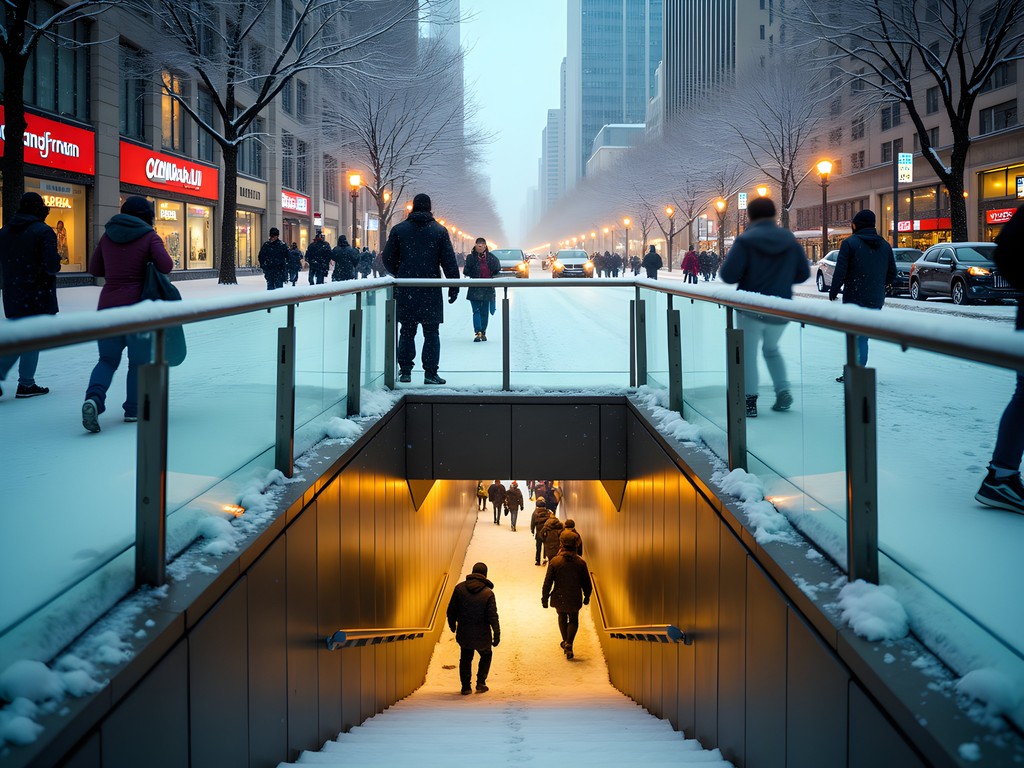
💡 Pro Tips
- Pack layers that can be easily removed when moving between the cold surface and the heated underground network
- Indoor-appropriate footwear is sufficient for extensive underground exploration, saving you from carrying heavy winter boots
- The underground network is busiest between 12-2pm on weekdays when office workers use it for lunch breaks—visit outside these hours for a more relaxed experience
Cultural Microclimates: Art and History Below Ground
What distinguishes Montreal's Underground City from mere utilitarian infrastructure is its rich integration of cultural elements. Throughout my exploration, I encountered numerous art installations, historical exhibits, and architectural features that transform transit spaces into meaningful cultural experiences.
The Place-des-Arts connection provides access to Montreal's premier performing arts complex and contains several gallery spaces featuring rotating exhibitions. During my visit, I observed an installation examining urban wildlife adaptations—a serendipitous alignment with my professional interests. The juxtaposition of art discussing wildlife adaptation within a space representing human adaptation created a compelling meta-narrative.
Particularly noteworthy is the underground portion of the Complexe Desjardins, which frequently hosts cultural events in its central atrium. I was fortunate to encounter an indigenous craft market during my weekend exploration, providing insight into traditional ecological knowledge and its contemporary expressions.
The network also preserves historical elements of Montreal's development. In several locations, archaeological remnants have been incorporated into the design, creating windows into the city's past. Near the Pointe-à-Callière Museum connection, elements of Montreal's original foundations are visible, offering a vertical timeline of the city's evolution—a form of urban stratigraphy that would be familiar to any field researcher.
For those interested in Montreal's cultural history, I recommend carrying a small travel notebook to document observations and connections between the underground spaces and their aboveground counterparts. This practice enhanced my understanding of how the city's cultural identity manifests across its vertical dimensions.
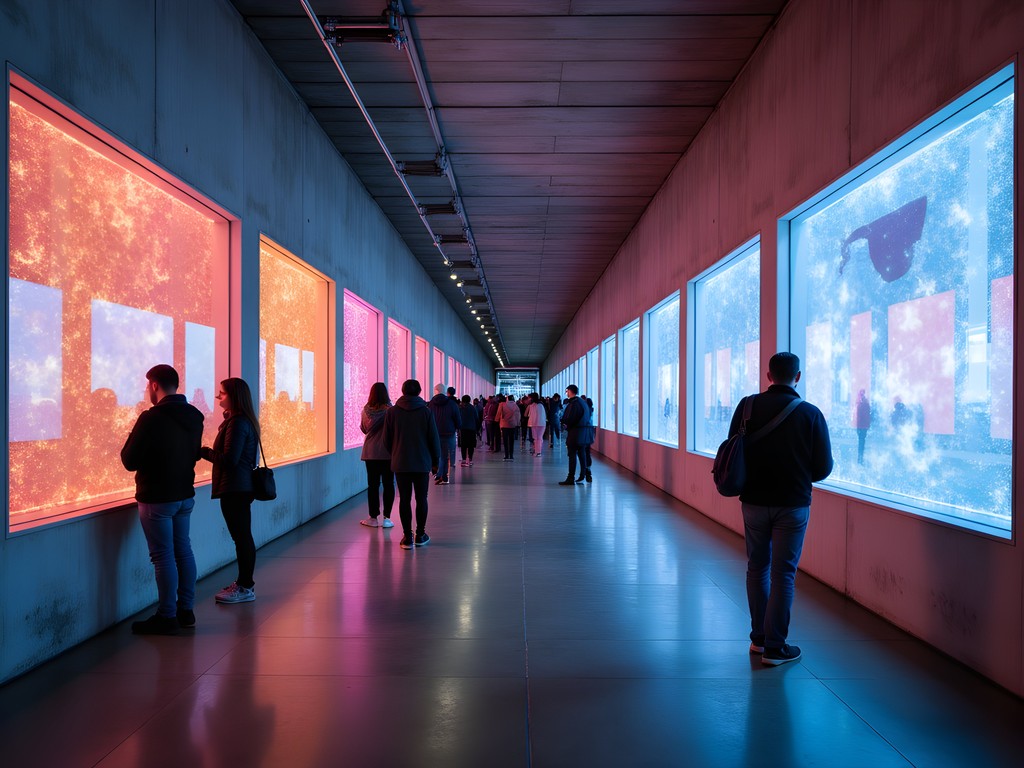
💡 Pro Tips
- Check Place-des-Arts and Complexe Desjardins event calendars before your visit to catch underground performances and exhibitions
- The Art Souterrain festival in February transforms the underground city into a massive art gallery with installations throughout the network
- Look for the small historical plaques and architectural preservation elements that are easy to miss when simply transiting through
Budget-Friendly Underground Exploration Strategies
Exploring Montreal's Underground City represents one of the city's most accessible urban adventures, particularly valuable for budget-conscious travelers visiting during winter months. The network itself is free to access, offering kilometers of climate-controlled exploration without admission fees.
During my weekend investigation, I developed several strategies to maximize experience while minimizing expenditure. First, I recommend using the Underground City as both destination and accommodation strategy. By selecting accommodations connected to the network, you effectively eliminate transportation costs and weather-related concerns for much of your visit. Several reasonably-priced hotels connect directly to the system, including some student residence conversions available during university breaks.
Food costs, often a significant travel expense, can be managed through the network's diverse options. While upscale restaurants abound, the underground food courts offer excellent variety at lower price points. I particularly recommend the food court beneath Place Ville Marie, where I found several independent vendors offering quality meals at reasonable prices. For additional savings, visit the Marché Artisans in the Queen Elizabeth Hotel connection, where you can purchase picnic supplies for impromptu meals in the network's many public seating areas.
For orientation, I initially considered a guided tour but discovered the free walking tour app that provides self-guided routes through the Underground City with excellent historical and architectural context. This digital guide allowed me to explore at my own pace while gaining insights typically reserved for paid tours.
Perhaps most valuably for winter visitors, the Underground City provides hours of climate-controlled activity when outdoor sightseeing becomes challenging. On particularly inclement days, I structured my itinerary around underground museums, shopping, and people-watching—preserving both my budget and comfort while still experiencing Montreal's cultural offerings.
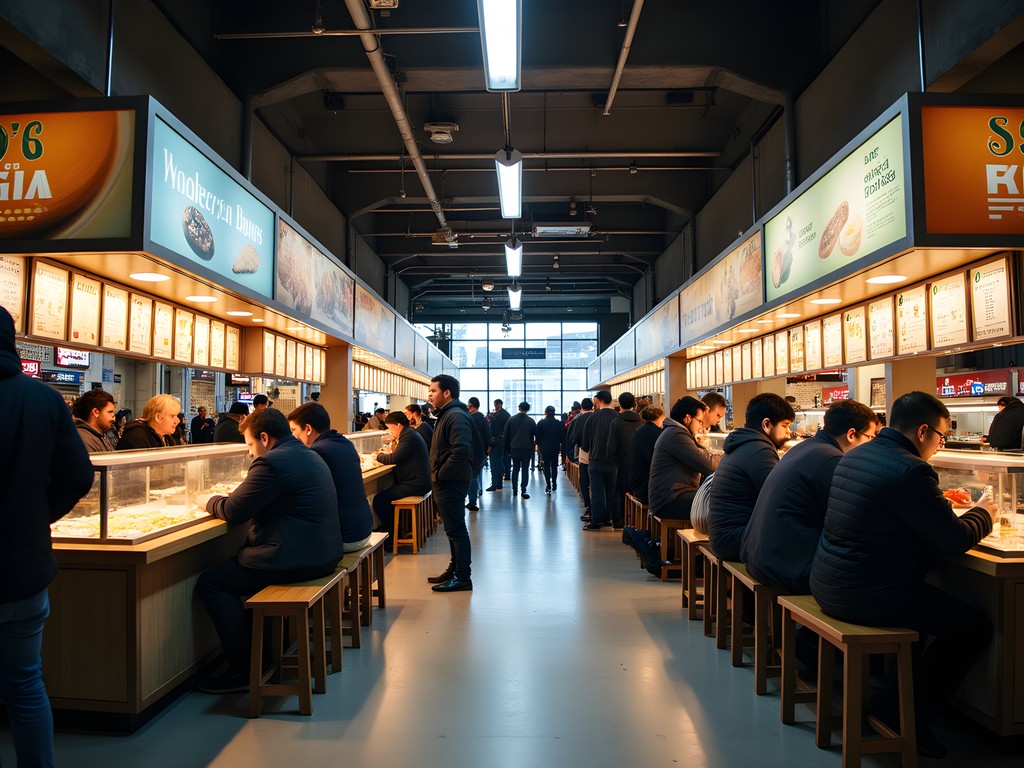
💡 Pro Tips
- The Montreal Metro day pass (approximately $10) gives you unlimited access to all stations connected to the Underground City
- Visit the Tourist Information Center in Complexe Desjardins for free maps and current event listings
- Many underground food courts offer reduced prices after 3pm as the lunch crowd diminishes
The Ecological Perspective: Observing Human Behavior Underground
As a wildlife biologist accustomed to observing animal behavior in modified habitats, I found the Underground City provided a fascinating opportunity to apply similar observational techniques to human movement patterns. The network creates a controlled environment where human behavioral adaptation becomes readily apparent.
During my systematic observation periods at various nodes throughout the system, I documented distinct movement patterns that varied by time of day, day of week, and specific location. Weekday mornings featured directional flows from metro stations toward office complexes, while lunchtime created more diffuse, multidirectional movement. Weekends shifted predominantly toward leisure-oriented patterns with slower pace and increased group sizes.
Particularly interesting were the behavioral adaptations at decision points—intersections where individuals needed to determine direction. Regular users demonstrated habituated pathways with minimal hesitation, while tourists (identifiable through behavioral cues like map consultation and photography) exhibited exploratory behaviors with frequent stops and direction changes. This mimics the difference between resident species' efficient movement through familiar territory versus the more cautious exploration of transient visitors.
The underground ecosystem also creates its own microculture with distinct social norms. I observed that conversation volume, interpersonal spacing, and eye contact frequency all differed from surface behavior patterns. Underground passages seem to generate a middle ground between public and private behavioral norms—neither as anonymous as street behavior nor as intimate as indoor social settings.
For fellow observers of human ecology, I recommend bringing a small travel binoculars that allow discreet observation from comfortable distances. While designed for wildlife viewing, I've found them equally valuable for urban observation when studying human movement patterns in complex environments.
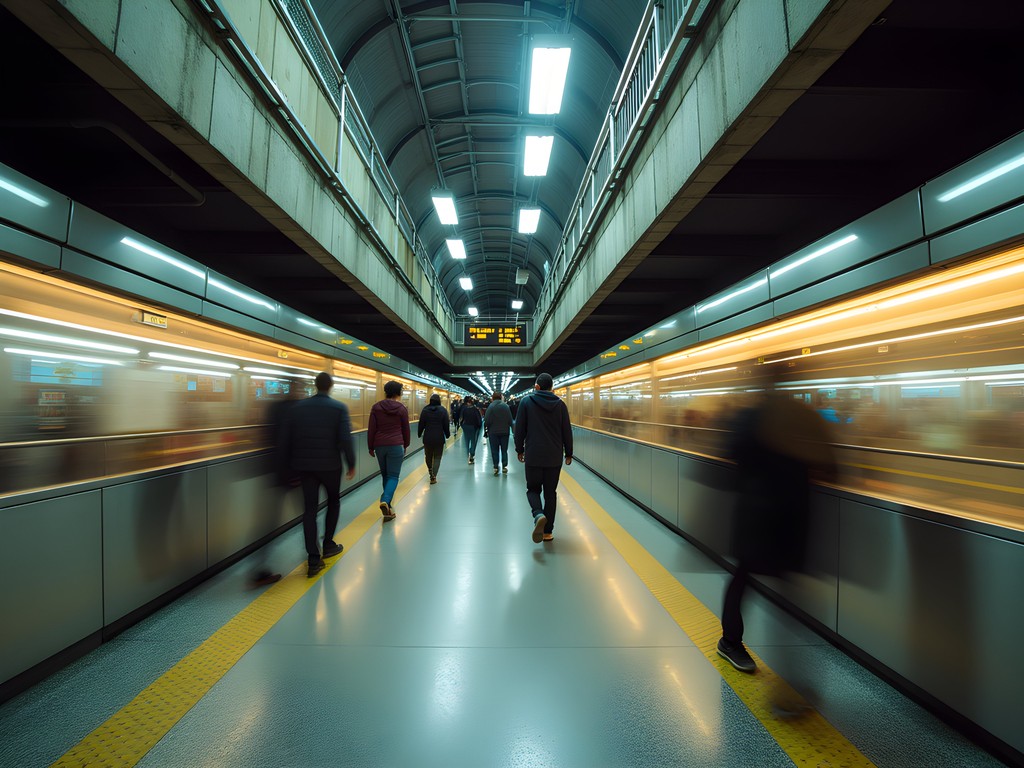
💡 Pro Tips
- For optimal people-watching, position yourself at major junction points like the McGill metro connection during transition periods (8-9am, 12-1pm, 5-6pm)
- The seating areas near major fountains and art installations provide excellent observation points while appearing to be simply resting
- Compare behavior patterns between weekday business crowds and weekend leisure visitors to observe distinct adaptation strategies
Final Thoughts
Montreal's Underground City represents far more than a climate adaptation or commercial development—it stands as a testament to human ingenuity in environmental modification. As both wildlife biologist and traveler, I find these subterranean passages offer a unique lens for understanding urban adaptation strategies. The network demonstrates how infrastructure, when thoughtfully designed, can transcend mere utility to become cultural space, social habitat, and even artistic canvas. For the budget-conscious winter traveler, this underground ecosystem provides a remarkable opportunity to experience Montreal's essence while remaining insulated from its climatic challenges. As our cities continue evolving in response to changing environmental pressures, Montreal's Underground City offers valuable insights into creating multi-functional urban spaces that serve diverse human needs across seasons. I encourage you to explore this remarkable urban adaptation with both the curiosity of a tourist and the analytical eye of a naturalist—the patterns you discover may change how you perceive urban environments everywhere.
✨ Key Takeaways
- Montreal's Underground City provides a climate-controlled environment perfect for winter exploration without specialized cold-weather gear
- The network offers numerous budget-friendly exploration opportunities with free access and affordable dining options
- Understanding the system's major nodes (metro stations) helps navigate the complex network efficiently
- The underground passages contain significant cultural and historical elements beyond shopping and dining
- Observing human behavior patterns adds an enriching dimension to the underground exploration experience
📋 Practical Information
Best Time to Visit
Winter (November-March)
Budget Estimate
$50-100/day excluding accommodation
Recommended Duration
1-2 days
Difficulty Level
Easy

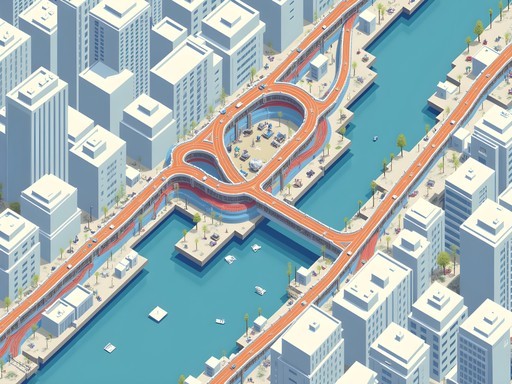

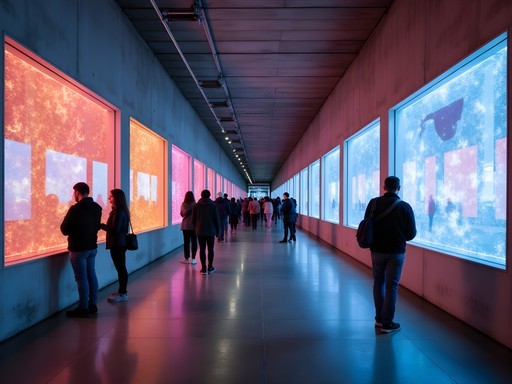

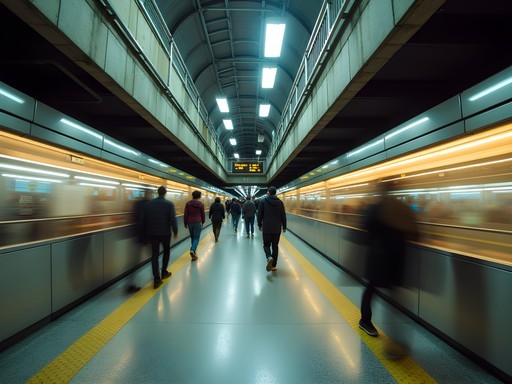


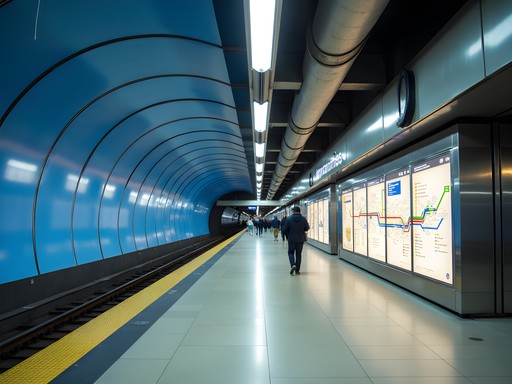

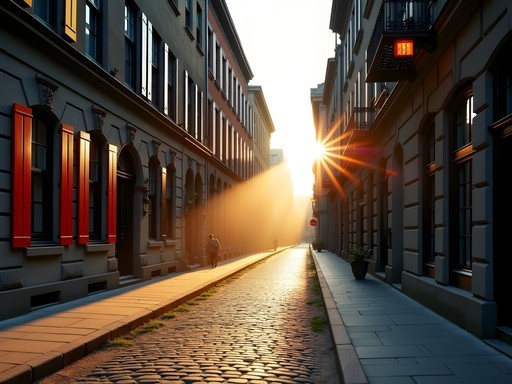
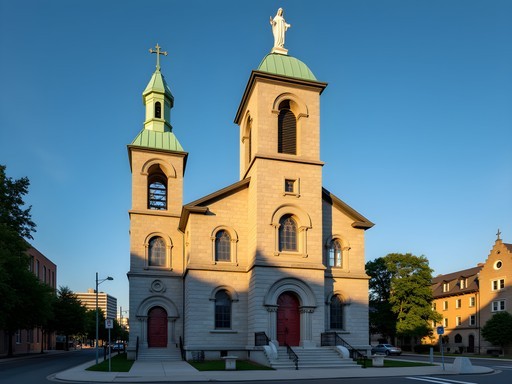
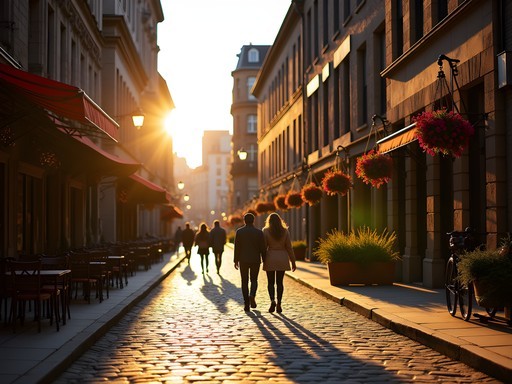
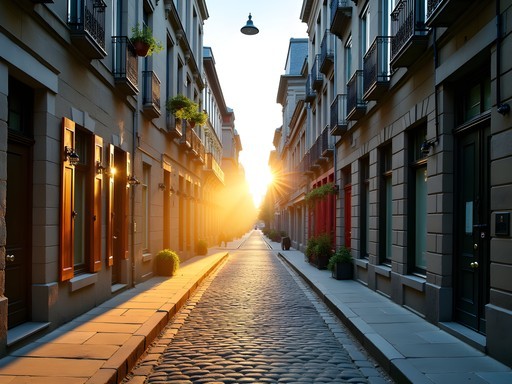


Comments
Zoe Dixon
I backpacked through Canada last month and spent three days exploring RÉSO. Sophia, your section on 'Cultural Microclimates' really resonated with me! I stumbled upon an impromptu jazz performance near Place des Arts that drew a crowd of both tourists and locals on their lunch breaks. It felt like discovering a secret underground society! For budget travelers, I'd add that the public water fountains are plentiful and the bathrooms are generally clean and free. Also, many of the art installations change seasonally, so it's worth revisiting even if you've been before.
escapeninja
Pro tip for anyone visiting: download the RÉSO map to your phone before going. The signage can be confusing at first, especially where different properties connect. I used my offline map app and marked all the entrances I wanted to use. Saved me so much time not having to backtrack!
starqueen
Thanks for the tip! Did you find any good food courts down there?
escapeninja
The food court at Place Ville Marie was my favorite - great poutine options and decent prices compared to the touristy spots above ground!
starqueen
Love this! Adding to my bucket list!
Fatima Sims
I explored RÉSO last winter and it was a lifesaver during that -25°C cold snap! What fascinated me most was how each section has its own distinct personality. The area near Place des Arts feels so artistic and vibrant, while the financial district sections have this sleek, corporate energy. I spent three days just wandering and photographing the transitions between these 'microclimates' you mentioned. My favorite discovery was a small art gallery tucked away near McGill station that I would've completely missed above ground. Did anyone else notice how the acoustics change throughout different sections?
starace
Yes! The sound in the Eaton Centre area is completely different from the quieter corridors near Bonaventure. I thought I was imagining it at first!
blueexplorer
This looks amazing! I'm heading to Montreal in January - is the Underground City actually warm enough to spend a whole day exploring without freezing between connections?
Sophia Wilson
Absolutely! The entire RÉSO system is climate-controlled. You can easily spend a full day exploring without ever putting on your winter coat. Just bring comfortable walking shoes!
blueexplorer
That's such a relief to hear. Thanks for the quick reply!
wildguy
Any specific food spots down there that are must-tries? Going in November and wondering where to grab lunch while exploring.
hikingpro
The food court at Place Ville Marie has amazing poutine at La Belle Province. Also try the Vietnamese place near McGill station!
Megan Martin
Seconding the Vietnamese recommendation! Also, there's a fantastic bakery called Au Pain Doré in the Cours Mont-Royal section. Their maple pastries are worth seeking out.
Megan Martin
Sophia, your biological perspective on urban design is refreshing! I've covered Montreal's Underground City twice for business travel features, but never considered the evolutionary aspects you highlighted. The "cultural microclimates" section perfectly captures how each section develops its own identity. For anyone planning a visit, I'd add that the signage system uses a color-coding that becomes intuitive after a day or so. I found the Montreal Pocket Guide had excellent RÉSO maps that worked better than my phone apps. Also worth noting: many of the best local boutiques are in the underground sections between Peel and McGill stations - much more interesting shopping than the standard mall stores!
vacationrider
Visited RÉSO last December and it was a lifesaver during that brutal cold snap! Spent almost three days exploring without ever needing my heavy coat. The art installations were unexpected highlights - especially the light projections near Place des Arts. One tip: grab a physical map at info centers. The digital ones didn't always work well underground when my signal dropped.
wildguy
Is it worth visiting in summer or mainly a winter thing?
vacationrider
Definitely worth it year-round! Summer was actually less crowded and still pleasantly cool. Plus many sections have natural light coming in from above.
hikingpro
Never thought of underground tunnels as an ecosystem before. Cool perspective!
Megan Martin
Right? Sophia's biology background brings such a unique lens to urban exploration.
hikingpro
Exactly! Makes me want to visit Montreal in winter now just to experience this adaptation firsthand.
Bryce Diaz
I spent a week exploring Montreal last winter, and your biological perspective on the Underground City is fascinating, Sophia! It truly is like an evolved habitat. I remember stepping off my plane into -25°C weather and wondering how I'd survive the week. Then my hotel concierge handed me a pocket map and explained I could reach most of my destinations without facing the Arctic conditions. What struck me most was how the underground spaces developed their own distinct personalities. The section beneath the Quartier des Spectacles feels vibrant and artistic, while the financial district areas have this sleek, corporate energy. I ended up interviewing several locals for my blog who said they specifically choose apartments based on underground connectivity during winter months - true urban adaptation at work! Your comparison to wildlife adapting to urban environments is spot-on.
Sophia Wilson
Thanks for sharing your experience, Bryce! That's exactly the parallel I was drawing - human adaptation creating these microenvironments. The apartment selection based on RÉSO access is a perfect example of how deeply integrated it's become in local life.
Venture X
Premium card with 2X miles, $300 travel credit, Priority Pass